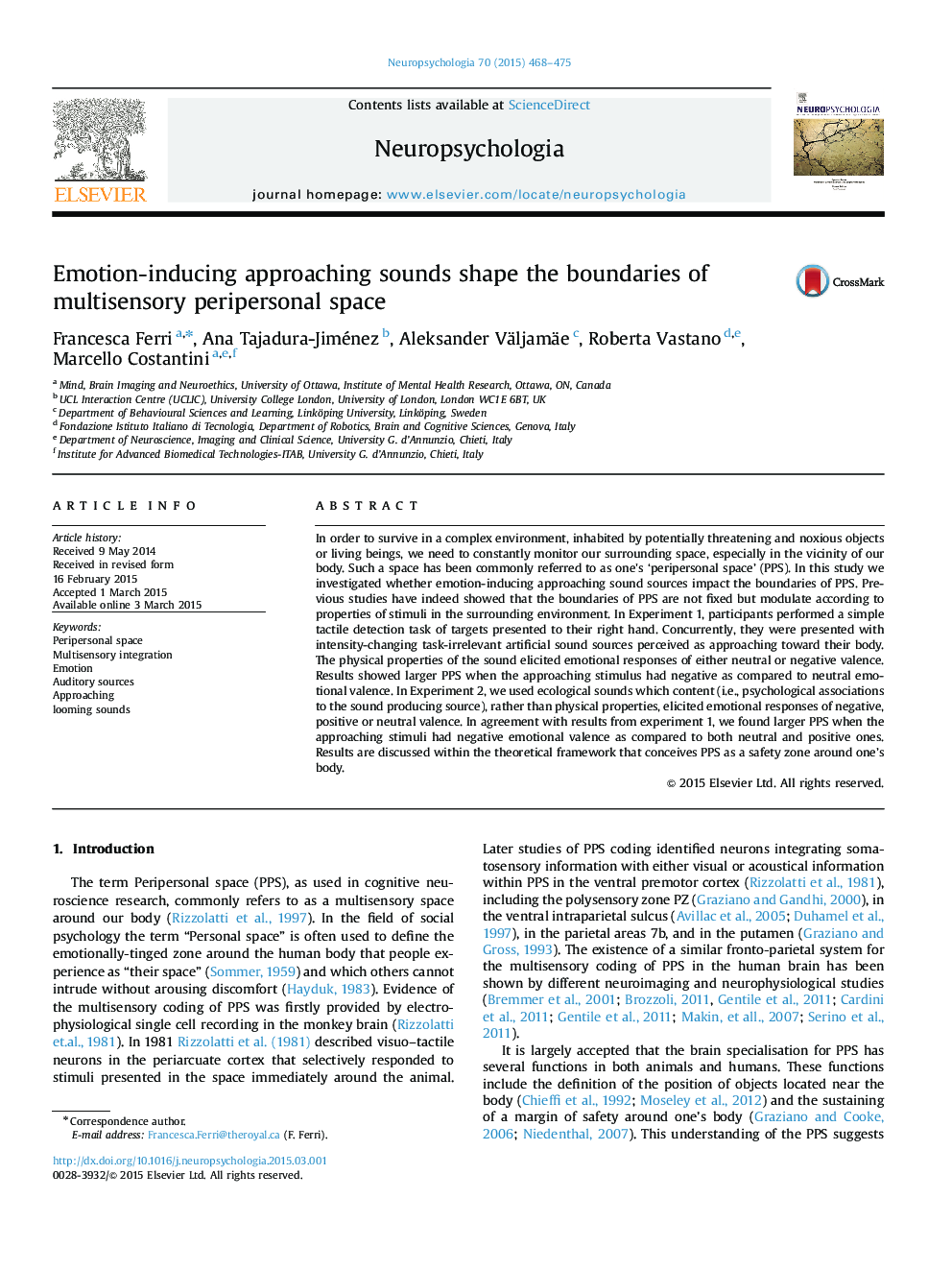| Article ID | Journal | Published Year | Pages | File Type |
|---|---|---|---|---|
| 7320320 | Neuropsychologia | 2015 | 8 Pages |
Abstract
In order to survive in a complex environment, inhabited by potentially threatening and noxious objects or living beings, we need to constantly monitor our surrounding space, especially in the vicinity of our body. Such a space has been commonly referred to as one's 'peripersonal space' (PPS). In this study we investigated whether emotion-inducing approaching sound sources impact the boundaries of PPS. Previous studies have indeed showed that the boundaries of PPS are not fixed but modulate according to properties of stimuli in the surrounding environment. In Experiment 1, participants performed a simple tactile detection task of targets presented to their right hand. Concurrently, they were presented with intensity-changing task-irrelevant artificial sound sources perceived as approaching toward their body. The physical properties of the sound elicited emotional responses of either neutral or negative valence. Results showed larger PPS when the approaching stimulus had negative as compared to neutral emotional valence. In Experiment 2, we used ecological sounds which content (i.e., psychological associations to the sound producing source), rather than physical properties, elicited emotional responses of negative, positive or neutral valence. In agreement with results from experiment 1, we found larger PPS when the approaching stimuli had negative emotional valence as compared to both neutral and positive ones. Results are discussed within the theoretical framework that conceives PPS as a safety zone around one's body.
Related Topics
Life Sciences
Neuroscience
Behavioral Neuroscience
Authors
Francesca Ferri, Ana Tajadura-Jiménez, Aleksander Väljamäe, Roberta Vastano, Marcello Costantini,
